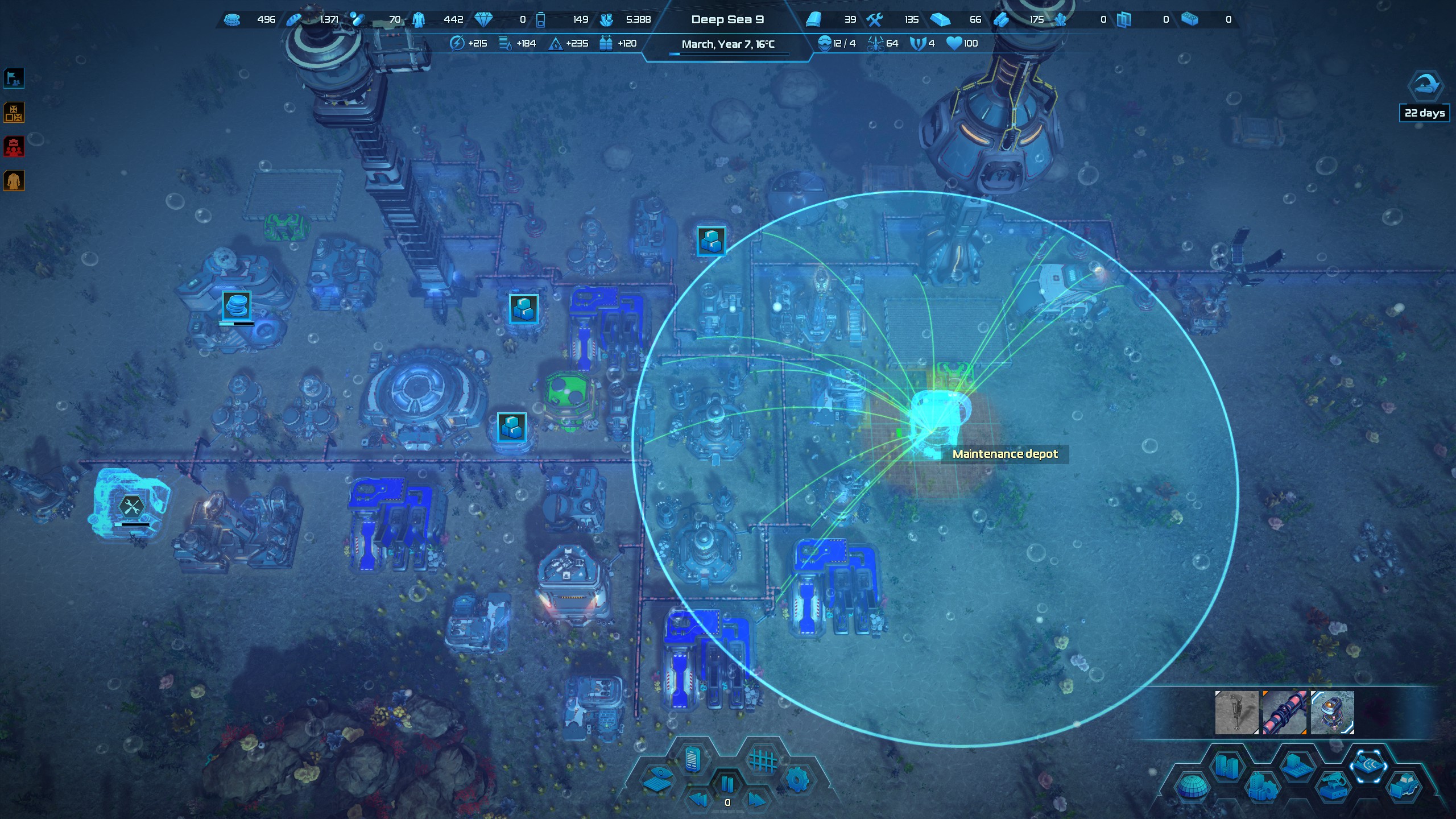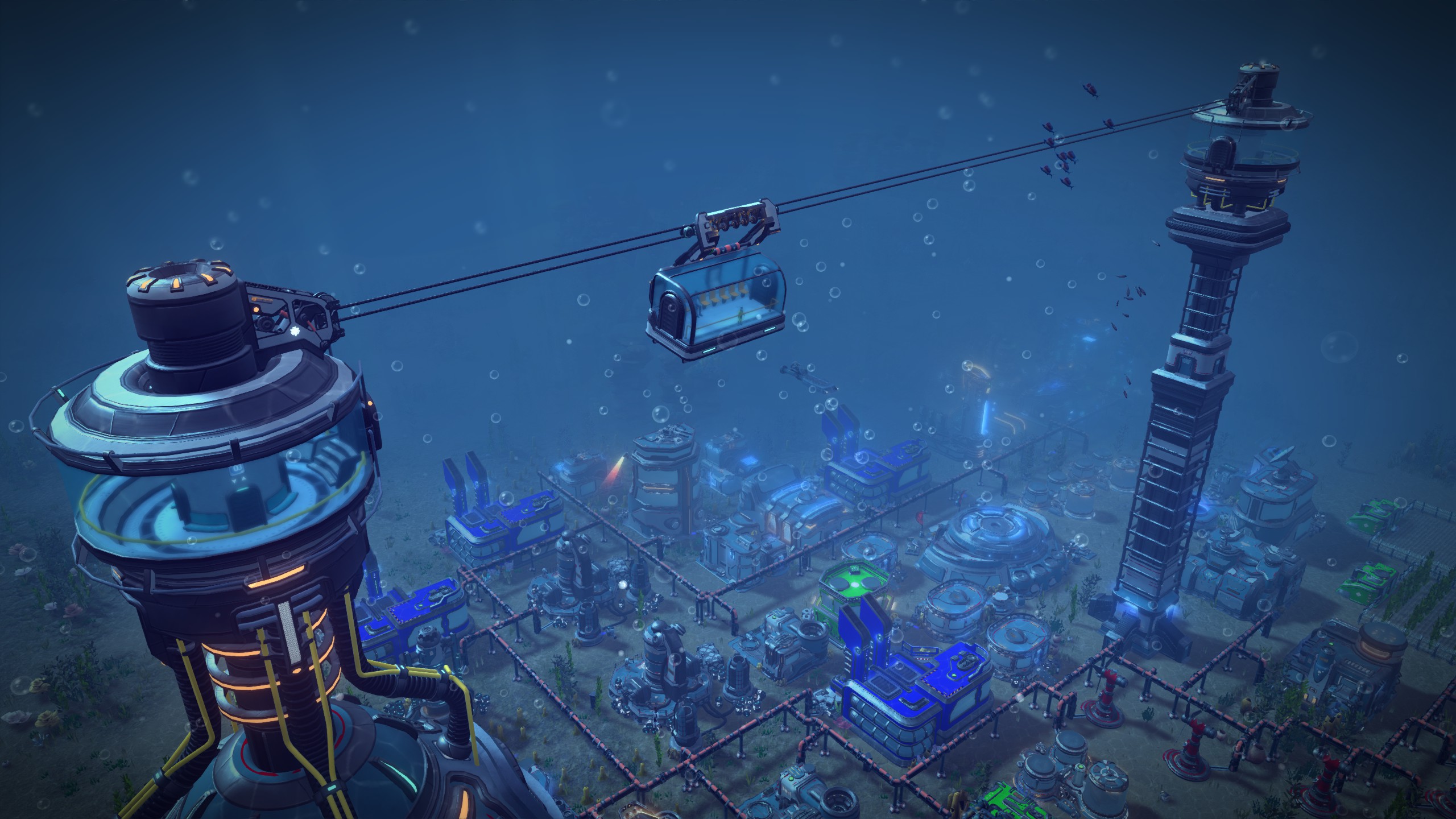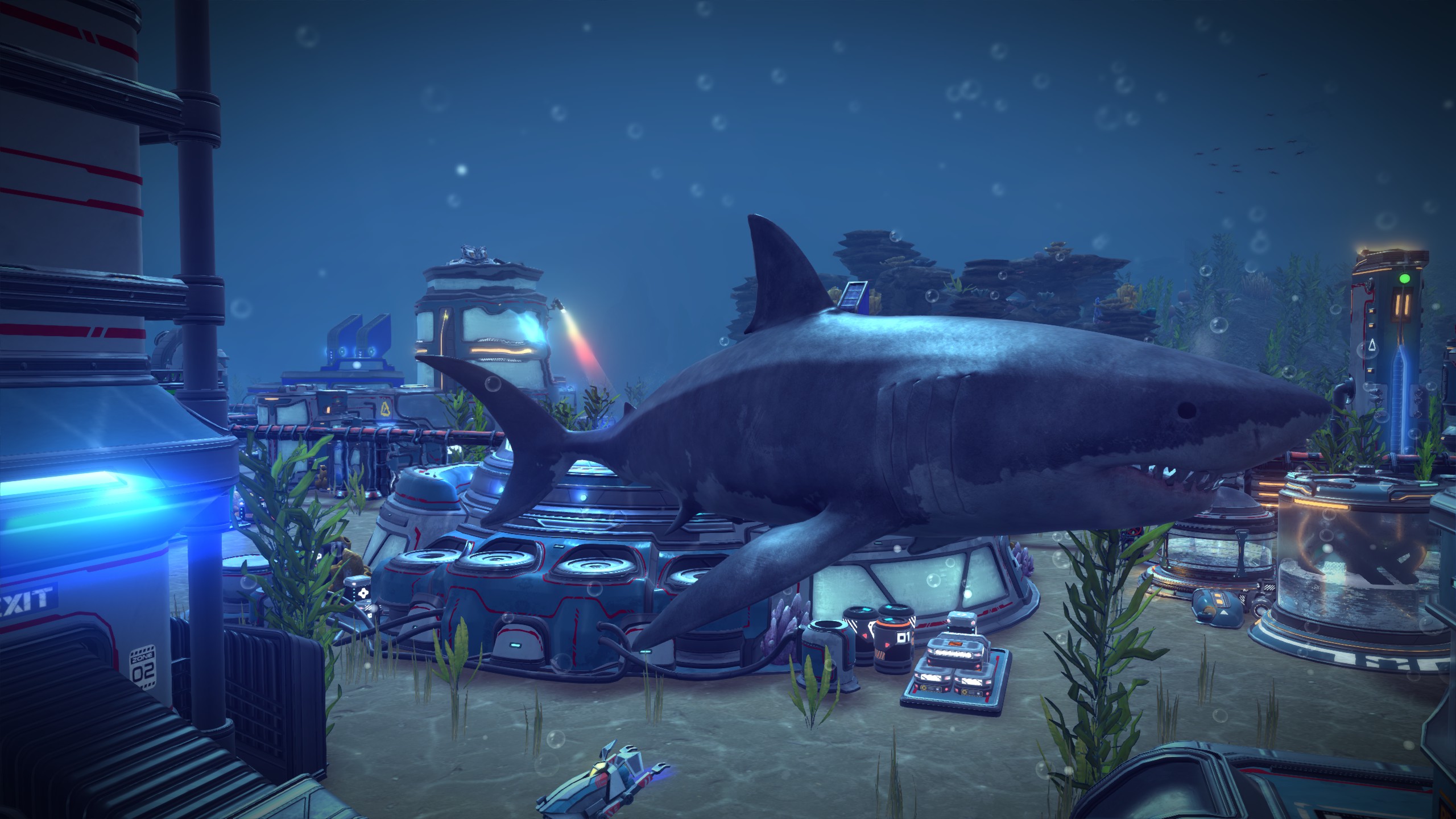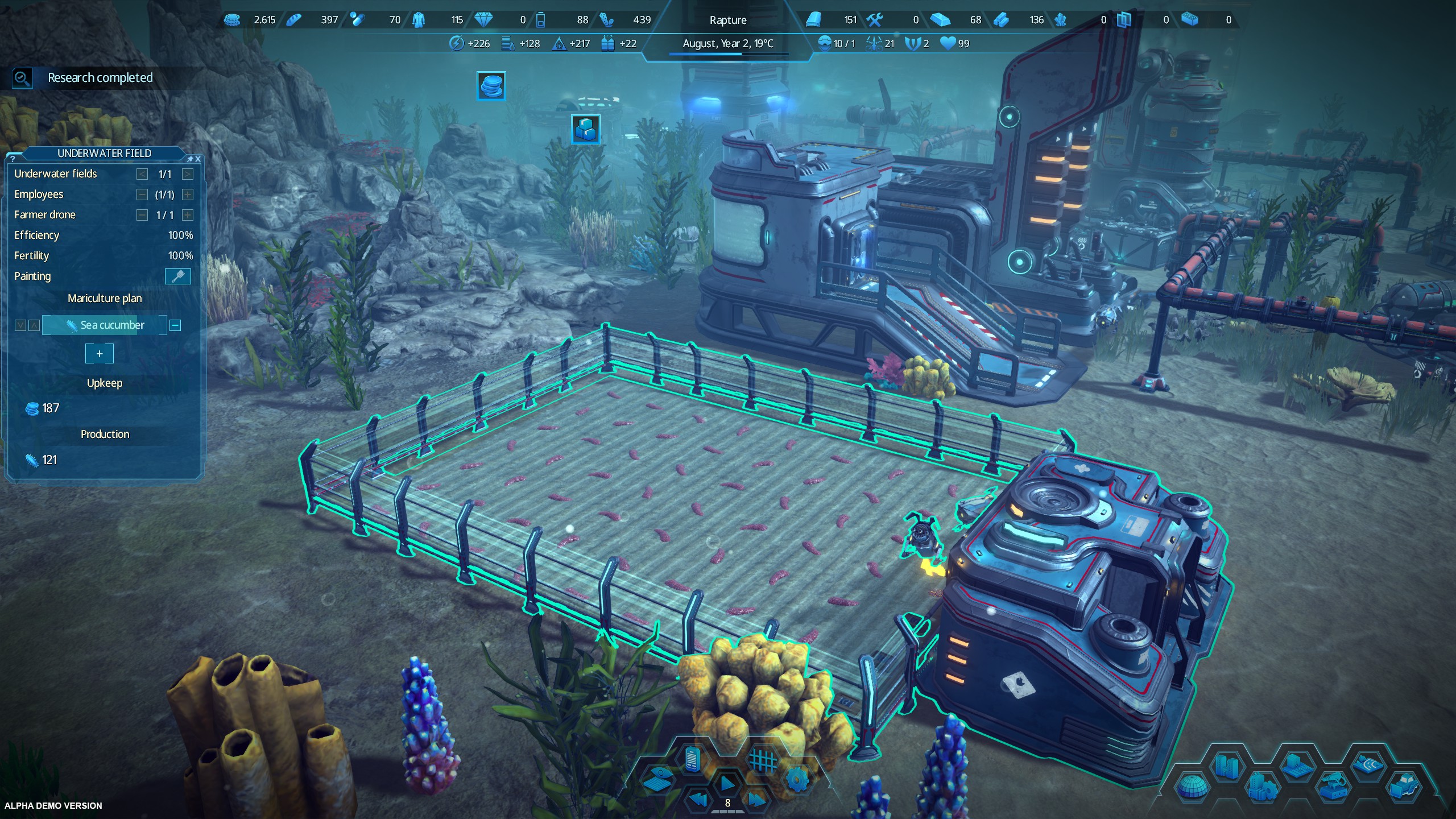Our Verdict
The resource management is deep, but the city itself never quite feels like a city.
PC Gamer's got your back
What is it? An undersea city builder with a heavy focus on resource management
Expect to pay: $24.99/£19.49
Developer: Digital Reef Games
Publisher: Overseer Games
Reviewed on: RTX 2080, Intel i7-9700K, 16GB RAM
Multiplayer? No
Link: Official site
Imagine looking out over the skyline of a bustling city and instead of seeing a flock of birds or a passenger jet, you see a pod of dolphins or a gliding submarine. This is Aquatico, where you're building a city on the ocean floor after an asteroid strike has rendered the surface world uninhabitable. Instead of roads, you'll build pipelines, instead of city buses you'll have submarines, and your farms will grow oysters and seaweed instead of wheat and pumpkins.
Actually… you can grow wheat and pumpkins, too, in a submerged greenhouse. How about: instead of tornadoes and floods threatening your buildings you get shark attacks? That's better.
Despite Aquatico's unusual setting, your city will grow and prosper based on many of the same elements found in city builders that take place on the surface. Mining for oil and stone, fabricating plastic and glass, farming for sustenance, buying and selling goods with other undersea hubs, and using turbines and solar collectors for power. But even after building a sprawling settlement under the sea, and with a large human population living in waterproof domes, my time with Aquatico felt less like building a city and more like assembling a string of busy factories. While pipelines connect everything together I never really developed a connection to the underwater city myself.
Nautical trial
Resource management is the real star of Aquatico, and there's loads of it to manage. The humble beginnings of harvesting sponges from the ocean floor gives rise to plastic factories to generate everything from construction materials to clothing. Oil can be pumped out of the ocean floor, processed into fuel, and piped to every building that needs it.
Turbines generate electricity from the strong ocean currents, and once an oxygen generator is built humans join the colony alongside automated, hard-working drones. Swift expansion needs to be tempered with the infrastructure to support it: build too much, too quickly, and angry red exclamation points will appear around the city signifying a deficit of fuel or oxygen. I found it a mostly soothing and relaxing experience to build in the bubbly blue depths, but it's livened up by moments of alarm and panic when I didn't plan ahead and ran into a shortage of fuel, electricity, or air.

The growing city can also be highly enjoyable to just sit back and watch for a bit. Human workers clomp across the seabed in mech-like scuba suits, aquatic drones speed through the water, grow and harvest crops, and carry supplies in their little mechanical claws. Automated submarines move resources between depots, warehouses, and the city center while all sorts of sea life glides over and through the city, from clouds of giant jellyfish to massive sperm whales.
Each building has a pleasing sci-fi look and subtle but enjoyable animations as they churn out their resources and products. As a nice touch, you can also paint each individual building or assign a color scheme to buildings of the same type, which I found useful for helping me quickly find certain key factories once my city really began to sprawl and I started losing track of what was built where.

There are plenty of other inventive and imaginative undersea touches, too, like farms that grow fields of cucumbers (sea cucumbers, of course) and animal pens for raising tuna instead of cattle. And there's a second level of construction, accessed by tapping the Tab key, where you build large domes for the growing human population. The domes slowly become neighborhoods with houses, shops, restaurants, schools, and even pets are visible when you zoom in and peer through the enclosure. There's public transportation in the form of cable cars so people can move between domes without having to put on a scuba suit. A tiny detail I love about the cable cars: adults will sit in the seats but kids will stand by the window, curiously looking out at the ocean passing by.
Another bright point is an expedition system a bit similar to Frostpunk's. After building a special hub, I can stock a submarine with human explorers and supplies and send it offscreen to investigate SOS signals, abandoned colonies, or new sources of food and resources. The missions provide the slimmest strands of narrative threads, usually boiling down to a single choice (fight a pirate sub or try to be friendly?) but it's nice to feel like my city is just one of many different undersea colonies.

Tech wreck
But I do have a beef with one of Aquatico's systems in particular: the research tech tree. Rather than being laid out in a logical tier list everything is combined into a single big, incredibly long scrollable menu. It's difficult to find where certain unlocks are on the massive tech tree, and they aren't always sensibly located.
I had to research jewelry stores and defense platforms before I could build the most basic fast food restaurant
For instance, at one point my supply depots were filling up and an in-game tip suggested I build a warehouse, which I first needed to research. But just finding the warehouse on the tech list took a lot of slow scrolling back and forth, and when I did find it I saw that a prerequisite was researching schools. Unlocking schools required I research glass, which required I first unlock quartz… all this to build a warehouse that's just a bigger version of my existing depots. Thing is, the warehouse didn't even need glass to be built in the first place, but I was still forced to research it first.
There are many instances of this on the tech tree. I needed to unlock a policy that taxes engineers before I could build more advanced farms, and I had to research jewelry stores and defense platforms before I could build the most basic fast food restaurant. The result of this badly organized system is often having to burn through weeks of tech research at 8x speed—and spend a small fortune in cash to do it—just to reach the item I want to unlock because it's buried behind unrelated technology or policies.

There's another issue with Aquatico that's a little harder to put my finger on, but after hours of play I've built a tremendous city that, unfortunately, never really feels like a city. It feels like a big network of factories connected by pipes.
My city is pretty grand, but I never developed any real fondness for it.
Part of the issue is that the footprint of nearly every factory and building is a perfect square, so my city wound up looking like a big flat grid, which stops it from developing a real personality as a place. The human settlers are so separate from everything else, with neighborhoods confined to the square domes on the second level instead of more organically integrated among industrial areas and farms. And frankly, straight pipelines with 90 degree bends just aren't as enjoyable to build as winding roads and bridges and highways. My city is pretty grand, but I never developed any real fondness for it.
The resource management systems of Aquatico are pretty deep, and there are a lot of charming details and some inventive ideas in the undersea builder. But like the water it's submerged in, my city wound up feeling cold. It's a nice place to visit, but I wouldn't want to live there.
The resource management is deep, but the city itself never quite feels like a city.

Chris started playing PC games in the 1980s, started writing about them in the early 2000s, and (finally) started getting paid to write about them in the late 2000s. Following a few years as a regular freelancer, PC Gamer hired him in 2014, probably so he'd stop emailing them asking for more work. Chris has a love-hate relationship with survival games and an unhealthy fascination with the inner lives of NPCs. He's also a fan of offbeat simulation games, mods, and ignoring storylines in RPGs so he can make up his own.


